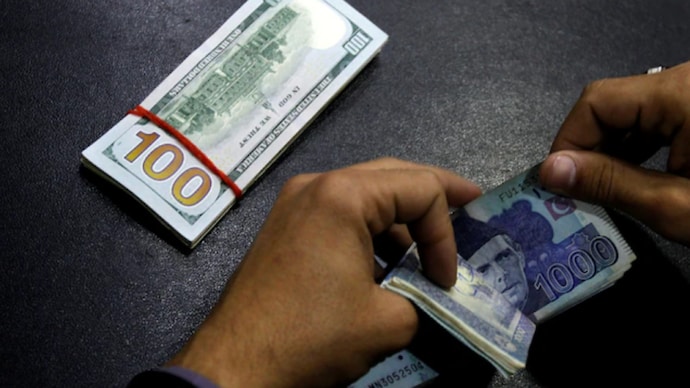All indicators of the Islamic Republic of Pakistan’s economy are now negative. Pakistan’s foreign currency reserves, especially the dollars, are depleting daily; Inflation is skyrocketing, along with declining expatriate incomes. The currency depreciated to an all-time low. There is also a shortage of government funds.
To deal with the situation, the subcontinent’s country Pakistan had to ask for a loan from the international financial organizations in the face of all difficult conditions. And there is political instability too. As a result, Pakistan’s economic crisis continues to deteriorate and political instability has made it difficult to deal with the crisis day by day.
In the last 50 years, the currency of Pakistan has depreciated by 4,100 percent. In May 1972, 1 dollar was equal to 4.76 rupees. But the present situation— 1 dollar is sold for around 250 rupees in the open market of Pakistan. As the foreign exchange reserves continue to decrease, the economic crisis is intensifying. Pakistan currently has foreign exchange reserves of only 9.1 billion dollars.
In March of 2022, Pakistan’s external debt was 128 billion US dollars. The country has to repay 21 billion dollars in the current financial year in total debt and interest. This financial year started from July 1. Half of Pakistan’s foreign debt is taken from China.
It is expected that this deficit will further increase in Pakistan’s current account in the current fiscal year. Because the flow of foreign loans is low. At the same time, interest in buying bonds has also decreased considering the risk. It is being said that there is no possibility of reducing this deficit of foreign exchange in Pakistan if the IMF fund is not released.
The price of fuel in Pakistan is skyrocketing. Petrol and diesel are being sold at Rs 230 and Rs 260 per litre. Added to this is the power crisis. There is no electricity for hours in all the cities and villages. Angry people are demanding uninterrupted power supply. People’s anger is increasing in these incidents.
Pakistan’s foreign trade is also almost completely unbalanced. In the fiscal year 2021-22, June, the country’s total imports were $84.19 billion; In contrast, exports were 39.42 billion dollars.
That is, the country’s trade deficit in the last financial year is 44.77 billion. In the previous financial year, the trade deficit was 31.15 billion.
Economists believe that Pakistan is also going in the same direction as the current crisis in Sri Lanka. They say that Pakistan’s economy is also failing like Sri Lanka. Like Sri Lanka, Pakistan’s economy is in crisis due to wrong policies and corruption. Economic conditions are expected to worsen amid political instability.
The government has ordered the markets to be closed by 8:30 pm to reduce rising fuel costs. For marriage halls and malls this time limit is restricted till 10 pm. Besides, instructions have been given to stop the production of electric fans and bulbs till July 2023. Government offices have been advised to hold meetings in daylight to reduce costs.
Chicken is now being sold at Tk 650 per kg in Pakistan. Daily necessities are also beyond the reach of people. Many people have been affected by unprecedented floods in 2022. According to United Nations estimates, floods cost the country at least $30 billion last year.



 For all latest articles, follow on Google News
For all latest articles, follow on Google News